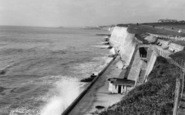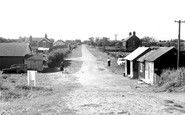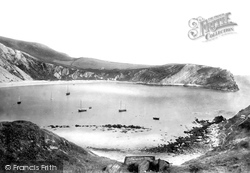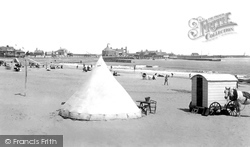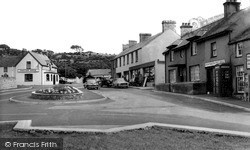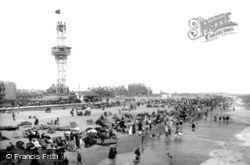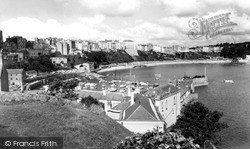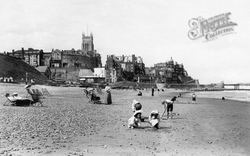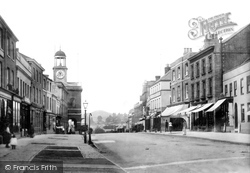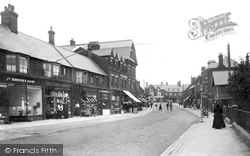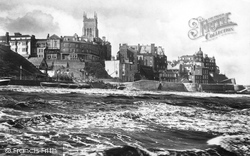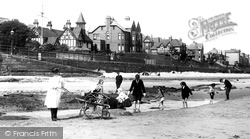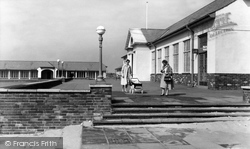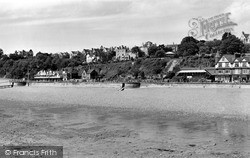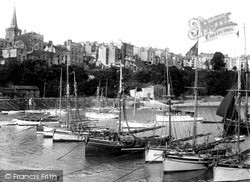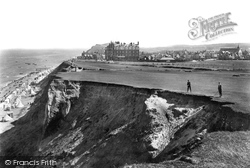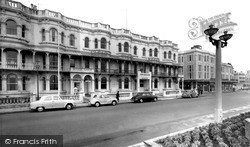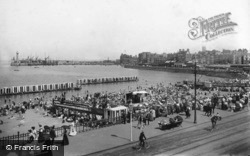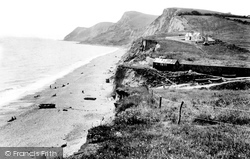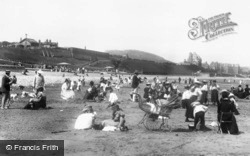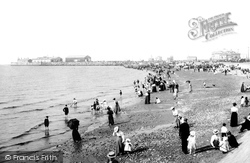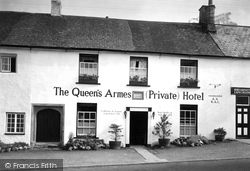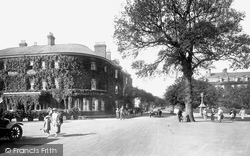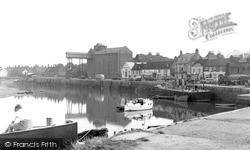Places
1 places found.
Those places high-lighted have photos. All locations may have maps, books and memories.
Photos
11 photos found. Showing results 901 to 11.
Maps
4 maps found.
Books
1 books found. Showing results 1,081 to 1.
Memories
1,362 memories found. Showing results 451 to 460.
The Runnacleave Hotel
The Runnacleave hotel was a seasonal base camp for me from 1967 until 1970. I worked as a waiter, and had so much fun in working there. I remember the Thursday night dance with Anita and Al doing the Cha-cha-cha fab. I ...Read more
A memory of Ilfracombe by
The Mid 50s
My parents used to rent a couple of weeks in a flat on (I think) Atlantic Terrace. I vaguely recall that a Mrs Rudge owned the property - although I may have that wrong as it is such a long time ago. My memories are of lovely sunny days on ...Read more
A memory of Polzeath
The Furniture Making Town By Ann Martyr
When I was at the High School my form was taken out to the beech woods to see Bodgers at work. I think that this was organised by the History Mistress. Miss Owen. They lived in a camp and hand made ...Read more
A memory of High Wycombe by
Aldbrough Cliffs 1955
HI. Nice to see the photo and comment . I was born in 1945 ,half a mile inland at the crescent, an half circle of 15 brick bungalows. probably built in the mid 1930's. I worked on the Farm mentioned it was called Mount ...Read more
A memory of Aldbrough by
The Lane To The Beach
As a boy of thirteen, with my family, after the war, I spent all my school holidays in Cornwall. Six weeks with my Uncle Arthur and Aunt Mabel in a tied cottage on Lower Tregantle Farm near Torpoint. The very air was ...Read more
A memory of Lower Tregantle by
Happy Memories
My grandparents lived in Hornsea and my parents and I would always spend our summer holidays with them. Meeting up with many of my parents friends, we had a big changing tent on the beach, all the adults sat in a massive circle ...Read more
A memory of Hornsea by
Summer Days At Ovingdean
My mother and I had many happy summer days at Ovingdean in the 1960's. It was easy to catch a bus there from central Brighton, disembarking near St Dunstan's home, walking by underpass beneath the busy main road, then taking ...Read more
A memory of Brighton by
Happy Days At Suntrap School
I went to Suntrap school in Hayling island , I remember Mr Combes my class teacher he was an excellent teacher I enjoyed his class very much . My best friends were Linda Grover and Susan Whitfield. I remember a ...Read more
A memory of Hayling Island by
Those Were The Days.....
That could be me scrambling down the sea wall onto the beach.......I spent my young years, into my early twenties, in our beach hut, on the beach and in the sea. I was born in Seabourne Nursing Home, just in from the cliff, a ...Read more
A memory of Southbourne by
Memories Of Kingswood Caravan Site/Saltfleet
I spent many happy years at Kingswood Caravan Site (now Tuxworth Holiday Park). My nanna & granddad (Henry "Sailor" & Nellie Toyne) started using the site in the 1960's until the 1990's, ...Read more
A memory of Saltfleet by
Captions
1,130 captions found. Showing results 1,081 to 1,104.
The entrance to this circular natural basin is barely discernible from the sea, guarded as it is by two projecting spurs of resistant Portland and Purbeck strata.
A lone tent sits on the empty sands.
This scene is virtually indistinguishable today: even the tear-shaped flower bed has survived decades of traffic management. The Panton Arms (left) is named after a local antiquarian, Paul Panton.
Always Norfolk's biggest and most popular holiday resort, Great Yarmouth always tried to find the latest attraction.
CASTLE HILL has a commanding view of both the landward and the seaward approaches, and it was almost certainly the location of an Iron Age Celtic promontory fort.
Boasting several large hotels, especially the Hotel de Paris which is right opposite the pier entrance, Cromer had become a very select place to visit.
This view shows the western end of East Street, with a closer look at the Town Hall clock-tower and cupola, and Colmer`s Hill forming the conical eminence in the distance (centre).
Hunstanton is unique for north Norfolk resort towns in that it looks west across the sea and not east. It was a quiet village of simple fishermen's cottages until the coming of the railway in 1862.
With its imposing 160ft-high tower, Cromer church was erected in the reign of Henry IV and dedicated to St Peter and St Paul.
Playing on the sands seems to be an enjoyment forgotten today, but here these youngsters certainly seem to be enjoying themselves on Egremont beach.
Despite a number of attempts at regeneration, the Lido at Ainsdale was an early casualty of the national move to overseas holidays.
With the last significant addition to the Esplanade being the Italian Gardens of the 1920s, only the cars (far right) betray this photograph's modernity.
This view shows the western end of East Street, with a closer look at the Town Hall clock-tower and cupola, and Colmer`s Hill forming the conical eminence in the distance (centre).
Tenby is probably the most recognisable seaside town in Wales.
Difficult though golf is, the natural hazard of crumbling cliffs on the edge of Sheringham Golf Links normally ensures that golfers practice their accuracy. Here we have two who have not!
Unlike the Stanhoe Hotel, the Clear View was typical of the small to medium-sized hotels that had been built on the former open spaces and lawns of the Georgian resort.
Benjamin Beale, a local glovemaker and a Quaker, invented the bathing machine in 1751 to conserve ladies' modesty while they took a dip in the briny.
This view shows Eype Mouth, looking westwards to what is now a National Trust skyline, with Ridge Cliff and Doghouse Hill rising into the 508-feet summit of Thorncombe Beacon (centre).
This popular seaside resort sits in a wide sweep of bay on the north coast, with wooded hills behind the promenade, which fronts miles of safe sandy beach.
Our late Victorian visitors were presented with a pebbly beach. We can see the stone jetty in the distance: it was still the main anchorage for ships when our photograph was taken.
Note the inscriptions on either side of the door and the plaque above it.
Along with the building to the left, it is now part of an amusement arcade, yet much of the original façade remains intact.
Benjamin Beale, a local glovemaker and a Quaker, invented the bathing machine in 1751 to conserve ladies' modesty while they took a dip in the briny.
The Great Eastern Railway Company developed the quayside, and freight trains rolled under the high platform of the tall granary warehouse to receive produce.
Places (1)
Photos (11)
Memories (1362)
Books (1)
Maps (4)


